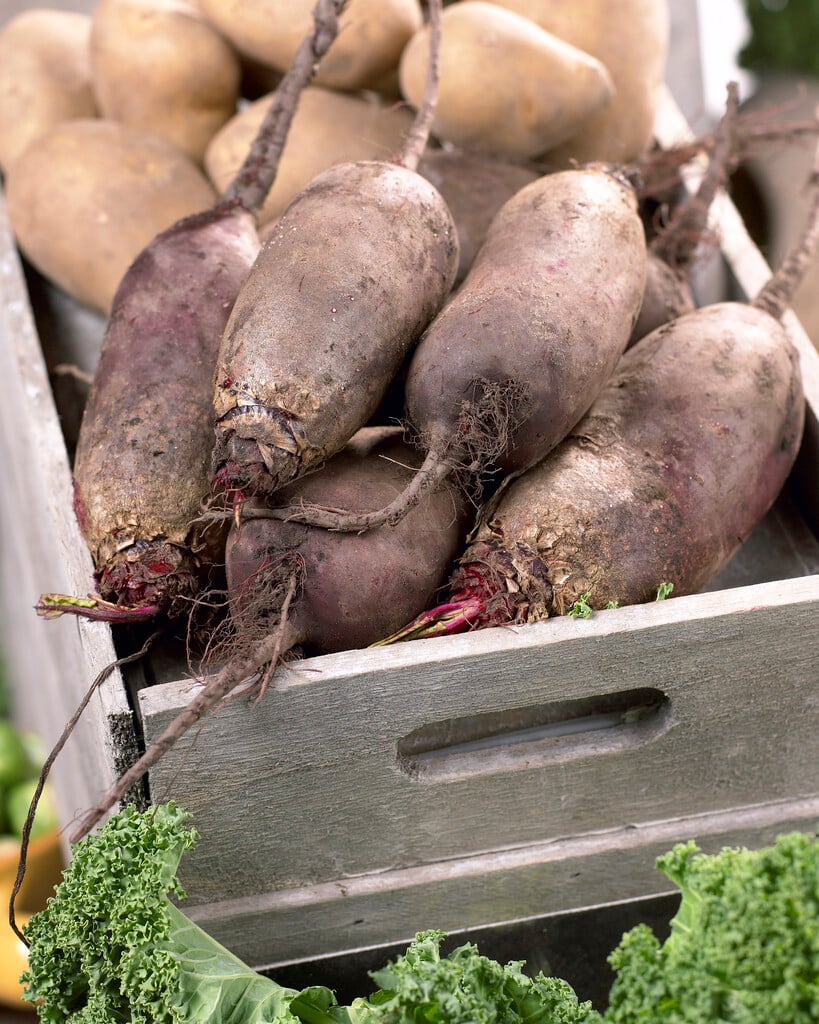Beta vulgaris 'Forono'
beetroot 'Forono'
An annual vegetable, grown for its edible taproot. Forono is a vigorous and productive beet, forming a uniform, elongated, dark-red root which is sweeter and easier to peel. Young leaves can also be eaten. Shows resistance to bolting.

Size
Ultimate height
0.5–1 metresTime to ultimate height
1 yearUltimate spread
0.5–1 metresGrowing conditions
Moisture
Moist but well–drained, Well–drainedpH
Acid, Alkaline, NeutralColour & scent
| Stem | Flower | Foliage | Fruit | |
| Spring | Green | |||
|---|---|---|---|---|
| Summer | Green | |||
| Autumn | Green | |||
| Winter |
Position
- Full sun
Aspect
South–facing or West–facing
Exposure
Sheltered Hardiness
H3Botanical details
- Family
- Amaranthaceae
- Native to GB / Ireland
- No
- Foliage
- Deciduous
- Habit
- Bushy
- Genus
Beta can be annual, biennial or perennial plants, often with rosettes of basal leaves and thick, fleshy roots. The genus includes a range of wild species, as well as cultivated food crops such as beetroot, chard and sugar beet
- Name status
Accepted
How to grow
Cultivation
Grow in a fertile, free-draining soil in full sun. Sow at fortnightly intervals from March to July for successional harvest. See RHS Grow Your Own Beetroot Guide
Propagation
Propagate by seed. See sowing vegetable seeds
Suggested planting locations and garden types
Pruning
No pruning required
Pests
May be susceptible to aphids, flea beetles and mangold fly (beet leaf miner)
Diseases
May be susceptible to beetroot heart rot, black leg and leaf spot. Tolerant of downy mildew
Get involved
The Royal Horticultural Society is the UK’s leading gardening charity. We aim to enrich everyone’s life through plants, and make the UK a greener and more beautiful place.